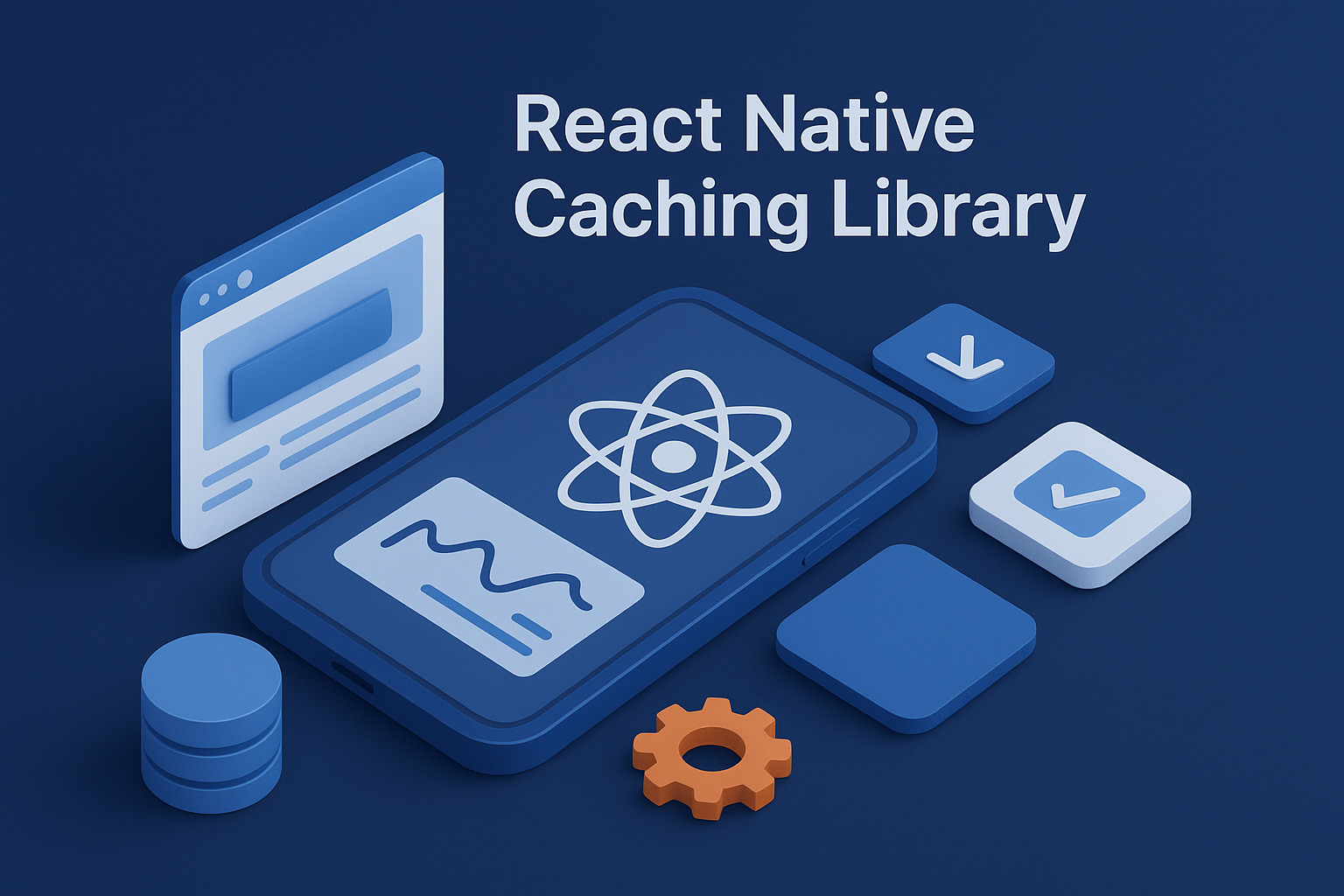Software developmentdifficulty
React Native Caching Library to Optimize Offline Performance
Promote offline performance in your apps with the best react native cashing library. Adapt the speed, reduce the API call, and increase the user experience.
M
Muhammad Aamir Yameen
08-29-2025
5 mint read

In today's fast-paced mobile world, users expect immediate reactions, smooth experiences and offline availability. If your app continuously receives data from API or loads large assets such as images and videos, the performance may fall dramatically. This is the place where a reacting native cashing library comes.
Cashing in reacting native is locally (in memory, asyncstora, or file system) is the process of storing frequently used data, so the app does not always rely on a slow network call. It ensures better performance, offline storage and enhanced user experience.
In this guide, we will find out how a reacting native cashing library works, why it is necessary, and developers can use it to manage everything from API reactions to image and video files. We will also cover the best practices, storage options and cashing strategies using popular concepts like memory cash, file system cash and asyncstorage.
Why use a react native caching library?
Before diving in the details, let us highlight why developers should take advantage of cashing in react native apps:
Better performance - Reduce API call and increase speed.
Enable the native offline storage for offline availability-free offline-first-first apps.
Data firmness - Ensure that data is available even after the app is restarted.
Customized collection - Save space with file system cache and memory management.
Better user experience - rapid load time keeps users busy.
Popular caching strategies in react native cache
A react indigenous cashing library usually supports several strategies based on the case of use:
1- Memory cache
Store data temporarily in app memory.
The best for short -term cashing such as sessions data or API reactions that often change, also get full documentation from github.
Example: React to native memory cash to read faster.
2- Asyncstage
JSON and small datasets provide continuous offline storage.
React native async storage suitable for optimization where small data (eg tokens, priorities, API cash) app should remain in the midst of launch.
3- File system cash
Collect large assets (picture, video, document) in the device file system.
Example: React to the native file system cache for offline-first-first apps.
4- Hybrid cashing
Memory for performance and perseverance adds + asyncstorage + file system cache.
Often applied in libraries that provide flexible storage adapters.
Major features of a React Native Caching Library
When selecting or constructing a cashing library, search for these features:
- React Native Image Caching (Store and get images efficiently).
- React native video cashing (download once, play offline several times).
- React native API data cache (save reactions from REST or Graphql).
- React to native cash hooks for easy integration with components.
- React native storage adapter option (memory, asyncstage, file system).
- Cash Invalidation and TTL (Time-to-Live) support.
- Offline-first approach to a reliable user experience.
Implementing React Native Offline Storage
Let's take a practical look at the react cache offline storage using the caching library. Imagine that you are getting a list of products from an API:
import React, { useEffect, useState } from 'react';
import { View, Text, FlatList } from 'react-native';
import { useCached } from 'react-native-smart-cache';
const ProductList = () => {
const [products, setProducts] = useState([]);
const { getCached } = useCached();
useEffect(() => {
const loadProducts = async () => {
const data = await getCached('products', async () => {
const response = await fetch('https://api.example.com/products');
return response.json();
}, { ttl: 3600 }); // cache for 1 hour
setProducts(data);
};
loadProducts();
}, []);
return (
<FlatList
data={products}
keyExtractor={(item) => item.id}
renderItem={({ item }) => <Text>{item.name}</Text>}
/>
);
};
export default ProductList;👉 Here, the react native cashing library locally stores API reactions. The next time the user opens the app, the products immediately load - even offline.
Handling Media: React native image and video caching

One of the most performance-rice tasks in mobile apps is loading media. With cashing, you can download once and reuse many times.
React native image caching
import { CachedImage } from 'react-native-smart-cache';
<CachedImage
source={{ uri: "https://example.com/image.jpg" }}
style={{ width: 200, height: 200 }}
/>This ensures that the image is stored in the file system cache for offline-first-first use.
React Native video caching
import { CachedVideo } from 'react-native-smart-cache';
<CachedVideo
source={{ uri: "https://example.com/video.mp4" }}
style={{ width: 300, height: 200 }}
controls
/>
With react native video cashing, the video is once downloaded in local storage and later repeated offline.
Optimizing react native API data cash
Instead of making API calls at each app launch, you can use react native API data cash strategy:
- Get the first load → API and store in cash.
- Later read from load → Cash.
- Use TTL (Time-to-Live) to refresh fresh logic → stale data.
- This not only saves bandwidth and server costs, but also ensures react native performance adaptation.
Best practice for react native cash management
- Use a hybrid strategy.
- Set TTL (periodically) for cash entries to avoid old data.
- Income old cash when new data is available.
- Reacts to the native cash hook for easy integration.
- Follow the offline-first design for better UX.
- Use the reacting native storage adapter in a flexible manner based on your requirements.
Conclusion
A well-designed response is required for the native cashing library high performance, offline-competent apps. Whether you need offline storage for API data, asyncstoras optimization, file system cache, or memory caching for speed, caching ensures that your react native app is faster, more reliable and user-friendly.
By taking advantage of react native image caching, video caching, API data cache and storage adapters, you can create offline-first-first apps that delight users. With proper cash management, your app will originally perform in devices and networks.
M
Muhammad Aamir Yameen
Software Engineer